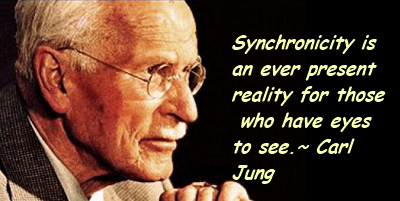A member of my congregation wanted to share with our prayer group an experience that she found most comforting, but was hesitant for fear of what others might think. She is an elderly woman who lost her husband the year before. His death left a void in her heart, a void that even her adult children and grandchild could not fill.
Speaking haltingly, she told the prayer group that she had a dream about her husband. She looked at each of us as though seeking our affirmation before continuing, and opted to take the risk and share her experience:
“I saw my husband in the back of the church. He was smiling; his aura was brilliant. I was in the front of the church working in the pews like I usually do on Fridays, getting things ready for Sunday. He didn’t startle me, but rather, I felt a real calm. It gave me so much joy to be with him again in the church.”
That was all she shared about her dream.
She smiled nervously, awaiting a response from the people in the prayer group who had gathered that Vigil of Pentecost Eve to pray together. She most certainly took a risk by stepping out of the box to share her experience with us. This traditional, Lutheran woman deviated far from her comfort zone and, because of the nature of this mystical experience, she felt vulnerable.
In my experience as a pastor for 30 years, many people have confided in me this same type of experience and I have no doubt that they happen with frequency in traditional churches throughout America. People are having spiritual experiences they cannot understand, and these experiences are deeply meaningful and spiritually impactful.
Not having the words or theological categories to articulate such experiences, some people feel like odd balls when they relate them to their communities of faith.
Bereft of the proper theological framing for the experience, many keep to themselves their brushes with reality, which are profoundly meaningful and even mystical. They are inclined not to share such experiences with their pastors for fear that they may be judged as theologically unorthodox or doctrinally unsound. Or, their experiences are so meaningful that they keep them from their pastors for fear that their well-intentioned, spiritual leaders might dogmatically explain away an experience that is deeply meaningful.
The experience becomes their special secret, confirming that God can do infinitely more than we could ever imagine.
This begs the question: how might a doctrinally-sound pastor respond to this woman’s story about her dream? The conversation could go like this:
“Your dream is interesting. Dreams are strange things, aren’t they? Who can understand them? Your husband is in heaven with Christ, assured of his victory over death through the resurrection of Christ. The resurrection is your assurance that your beloved is alive in Christ. Don’t fixate on the dream. Fixate instead on the objective word. That is your assurance.”
Of course this is true. Indeed it is the word of God that informs the cultural and psychic context that makes that dream even possible for this woman. The image of the church, oneness in Christ with her husband, and the joy of working in the church that has been the anchor of their lives were all prompted by the Word. The dream is her subjective expression of what she knows objectively through the Word.
But could this conversation from a pastor rob her of her experience?
These subjective, mystical experiences happen more often than we pastors think, and here is the rub…
We pride ourselves in making everything nice and objective so that we can control it.
We are quite adept at handling the objective reality. That’s our currency in traditional churches. At the same time, however, our subjective experiences have no context in traditional churches. We concede this subjective sphere of our lives to late night dinners, demons, and two-bit pandering psychics because we are uncomfortable with the spiritual and mystical experiences that may arise from the subjective realm.
I shall never forget what happened during a retreat I conducted at a Southern California abbey for members of my church. I had just finished doing a Lectio Divina exercise with the retreatants. Afterwards, I invited them to share what God conveyed to each of them in this spiritual exercise. A young man commented on what he had experienced. He said he saw the sun, bright and warm. As he gazed on its brilliance, a dove emerged from the sun, descended and landed on him. The symbolism was obvious, informed by the John 1:4 text on which we had just meditated, “In him was life, and the life was the light of men.”
It was a powerful experience for him and the other retreatants concurred.
However, later that evening, an avalanche of thoughts that discredited the experience hit the young man. He got the impression that he was doing something illicit by entertaining such a vision. It was as if he had betrayed his allegiance to the objective word of God. His culture and tradition had failed him—not being broad enough to accommodate this type of spiritual experience. He felt vulnerable by stepping outside the box in the manner in which he did.
I consoled him by encouraging him to rethink his reaction. I helped him to understand that his experience was not a threat, but instead a place of inspiration. It was the place of art and creativity. We would not have Bach’s cantatas without such a place of inspiration. The visual art that inspires us and heightens our devotion to Christ comes from the heart, that very same place of subjectivity.
Why do we fear this kind of mystical experience?
We are adept at dealing with what we believe is the objectivity of our religion, namely Word and Sacraments; but we are less adept at dealing with the subjectivity of it, namely the spiritual center, which invites us to learn the language and the movements of the heart in addition to the head.
We fear the heart and don’t trust it; we believe that it is woefully corrupt according to Jeremiah. Yet, the heart, the center of the subjective sphere, is where we, together with the Holy Spirit, wage battle against the concupiscence (proclivity to evil) that remains in the heart subsequent to Baptism. The daily dying to this proclivity through repentance initiates spiritual movements of the Spirit in the heart, which create beauty that informs worship and devotion to God.
We must be OK with dealing with the heart and its stirrings; we must be OK with the subjectivity of the heart, indeed the unique way that God communicates to us in peace, love and joy, the very contours of beauty.
When you engage in spiritual practices like contemplation that silent your inner self-dialogue and other people’s dialogues in your head, you make room for God to expand your experience of reality. One of the benefits of contemplation is that you begin to pay attention to the life around you, which you are all too prone to ignore when you are only in your head. By spending too much time in our heads and being beset by a multitude of thoughts, we miss out on life; we fail to see its deeper connections.
As your restless mental activity is gradually silenced through the practice of contemplation, you are empowered to see more. The universe comes to life. You can appreciate beauty in all its manifestations.
Synchronicity
Synchronicity is the ability to meaningfully connect unrelated events, people and things. It breaks down barriers, it stirs things up—it wakes you out of your “dogmatic slumber.”

Photo courtesy of http://starrystez.com
The Swiss psychiatrist Carl Jung (1875 – 1961) proffered the concept of synchronicity as a worldview to account for both the linear causality of the mechanistic world and the non-linear, non-causal world of meaning. According to Jung, things can be causally connected; however, they can also be meaningfully connected. Coupling Jung’s concepts with Einstein’s theory of relativity and quantum psychics, synchronicity opens up the universe, making it come to life, making it a mysterious place that throws into doubt ironclad religious and scientific dogma.
Synchronicity gives you a glimpse into the world outside space and time, whose currency is meaning. It is in this resultant synchronicity that the causal world and non-causal world interlock and interpenetrate each other.
Synchronicity is best experienced and not talked about. You know it when you see it. Who hasn’t had the experience of thinking of someone and a moment later, that very person calls you on the phone. Or, perhaps you had a dream that you forgot about in the morning that you remembered at the right time later on in the day. At just the right moment, the dream gave you enlightenment about a situation that you were dealing with, yielding an “aha moment.” These experiences have a way of opening you up to other possibilities, breaking you out of the mechanistic linear world of cause and effect, from which vantage point we think that we might somehow control life.
Howard Thurman, the spiritual and theological mentor of Dr. Martin Luther King, relates the story of his ardent desire to attend college as a boy. In the early 20th century, his impoverished African-American family could not afford such a luxury, as indeed most Americans couldn’t in those days. To cover their shame of being poor, his family tried to steer him in another direction. But he could not be deterred. He decided to apply to Morehouse College upon graduation from high school. When he boarded that bus from his home in Florida bound for Atlanta, he had no idea how he would pay for a college education.
When he arrived on campus, surprisingly Thurman discovered that his tuition, room, board and all fees were paid in full. His poor circumstances, his desire to attend college and the provision of the money were not accidently connected; they synchronistically became deeply and meaningfully related in Thurman’s mind and heart.
Meaning can be a powerful nexus among people, things and events. There need not be an explanation in terms of cause and effect…
Another Member’s Experience
I have a member of my congregation who lost her father when she was 5 years old, a vulnerable age. She told me about an experience she recently had while watching a TV program about a woman who also had lost her father as a small child. The woman spoke of the impact of not being raised with a father, how it skewed her perspective on men. Strongly identifying with the woman’s story, my member was touched deeply; she couldn’t take her eyes off the TV.
All of a sudden, the TV turned off. Even though it was a still and warm spring evening, a small gale of wind blew through her opened sliding door, and she felt it on her face. Attached to her patio cover, there was a wind chime with a central clapper surrounded by five elongated chimes. Rather than the usual way a wind chime rings, the capricious gale wind did not ring all five chimes randomly. Instead, only one chime tone rang distinctively and repeatedly for several moments.
The cutting off of the TV, the small gale wind, and the repeated ringing of one chime tone were not causally related. As she told the story to me, my member was able to give value and meaning to the experience by relating the circumstances to each other as a single orchestrated, synchronistic event.
She was able to recognize and appreciate the spiritual synchronicity present in her experience.
A disciplined practice in contemplation teaches you to appreciate both the causal world and the world of meaning by teaching you to live and rest in both by conditioning you to be fully open and available to both. No dualism!
You learn to negotiate in the world of cause and effect and yet be open to the mystery of the world of meaning, which is foundational to beauty.
Your eyes get opened, and you see more connections in the schema where the spiritual world interpenetrates the material one.
In short, you achieve a spiritual synchronicity, and the vehicle that enables you to create meaning is the Holy Spirit. You learn that what may seem like a set of random events instead becomes related meaningfully to you through the Holy Spirit.
On the first Pentecost after Easter, an outsider looking at the group of 120 disciples of Jesus in prayer would have felt the wind, seen the tongues of fire and the subsequent ecstasy, empowerment and boldness of that motley group of illiterate Galileans. However, without the Holy Spirit, the disinterested outsider would not have been able to meaningfully connect that random set of events as the profound transformation of Jesus’ disciples that would alter their tragedy-laden consciousness and empower them to change the course of human history.
The Holy Spirit meaningfully connects seemingly random events that are non-causally related, thereby luring us to be in conformity with Christ. Authentic spiritual experiences are made so by the Holy Spirit.
If a spiritual experience opens you up more to Christ and you become like him in a life informed by love, joy, peace, patience, kindness, goodness, faithfulness, gentleness, and self-control, then that experience was tailor-made for you. Who am I to dogmatically argue away such an experience that is deeply meaningful to you?
One of the many fruits of contemplation is that you give up the desire to argue and fight, insisting that things must go your way. You come to see that God has the whole universe with which to communicate to humanity. And, in God’s time, God can be most convincing.
The Spirit gives you eyes to synchronistically see. Be open and ready to receive.







































